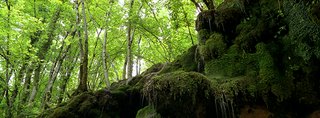XPan is back in town
 I have had quite a few cameras coming in and going out over the last few years. The Hasselblad XPan, however, has been the only one that I truly regretted selling. In fact, the XPan was the very first professional camera I bought. It was instrumental in shaping my panoramic eye, which for me continues to be one of the key perspectives to observe the world photographically. Above is a sample from these early years, taken in the French Jura area, with the 45mm on Fuji Superia 200 emulsion.
I have had quite a few cameras coming in and going out over the last few years. The Hasselblad XPan, however, has been the only one that I truly regretted selling. In fact, the XPan was the very first professional camera I bought. It was instrumental in shaping my panoramic eye, which for me continues to be one of the key perspectives to observe the world photographically. Above is a sample from these early years, taken in the French Jura area, with the 45mm on Fuji Superia 200 emulsion.That being said, I always felt a bit constrained by the relatively narrow angle offered by the standard 45mm lens. And at that time, I didn't see an opportunity to add the very expensive 30mm wide angle lens to my kit. Furthermore, its relative slowness (f5.6) and the necessity to add a centre filter (1.5x) seemed to make it unsuitable for handheld work. That was probably the key reason to sell the camera.
I came to regret this decision over the years. Not that I lacked options for panoramic photography. But I came to appreciate that the XPan offers a package of features that no other camera has: lightweight despite its solid, metal body, very bright viewfinder, automatic film transport, TTL light metering, dual format and excellent optics.
So when Hasselblad recently announced that it would discontinue its X-line in order to comply with EU "Disposal of Hazardous Waste Regulations", I decided to buy another XPan before it would disappear from the market. I found a second hand XPan I with 45mm and 90mm lenses - a very clean kit - in Holland for 1500 euro and closed the deal as quickly as I could. I am not too bothered by the difference between Mark I and II of this camera. Then I also added a new 30mm lens from Robert White.
I was ravished when I received the 30mm lens kit. The separate viewfinder is sparklingly clear and offers a very natural perspective for someone who is used to working with an Horizon camera (the latter covers 120° whilst the XPan 30mm offers an horizontal angle of 94°).
I am quite happy to be able to rely again on the XPan. It's a gorgeous camera, very well thought out and superbly built. I am sure it will serve me very well many years to come.


0 Comments:
Post a Comment
<< Home